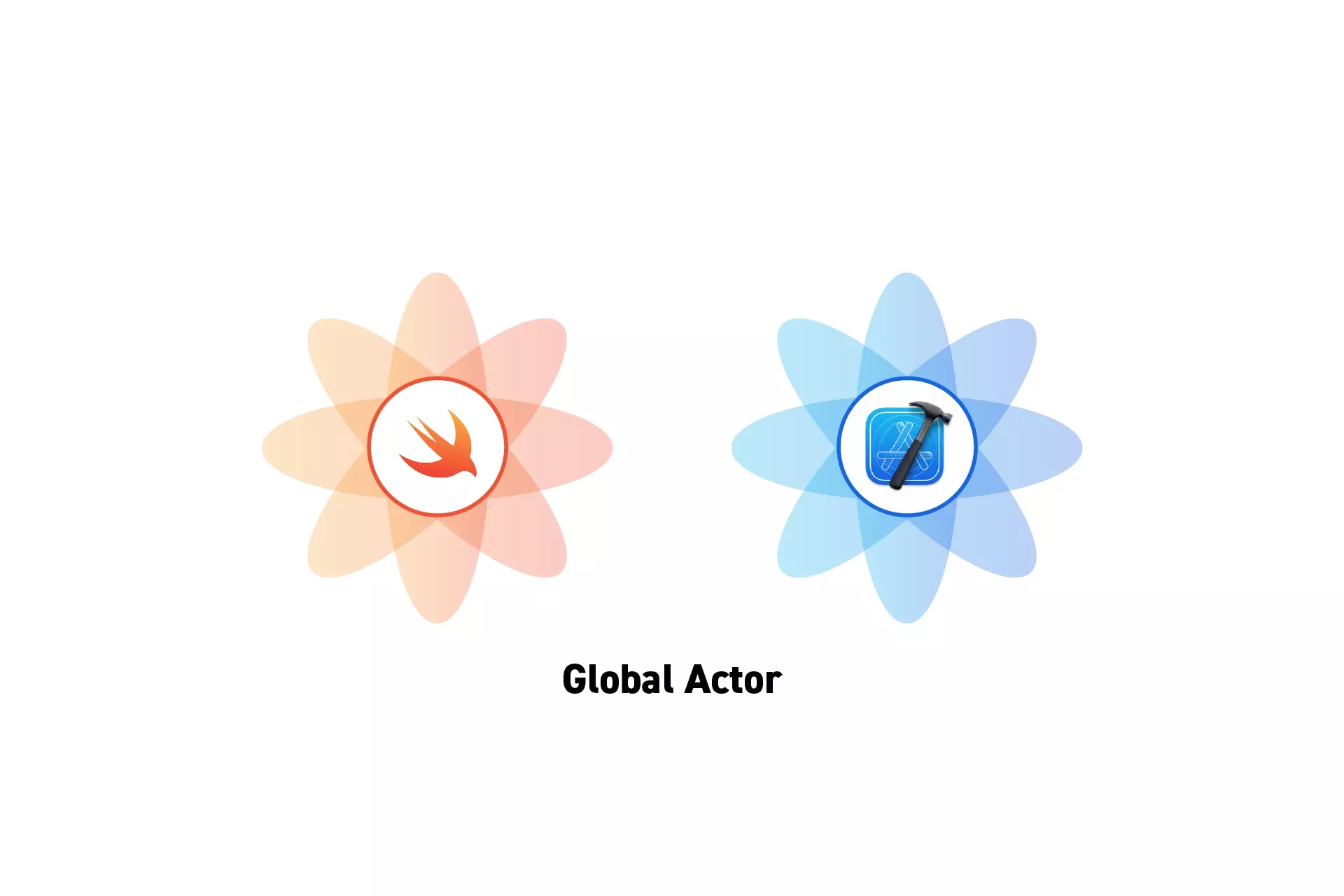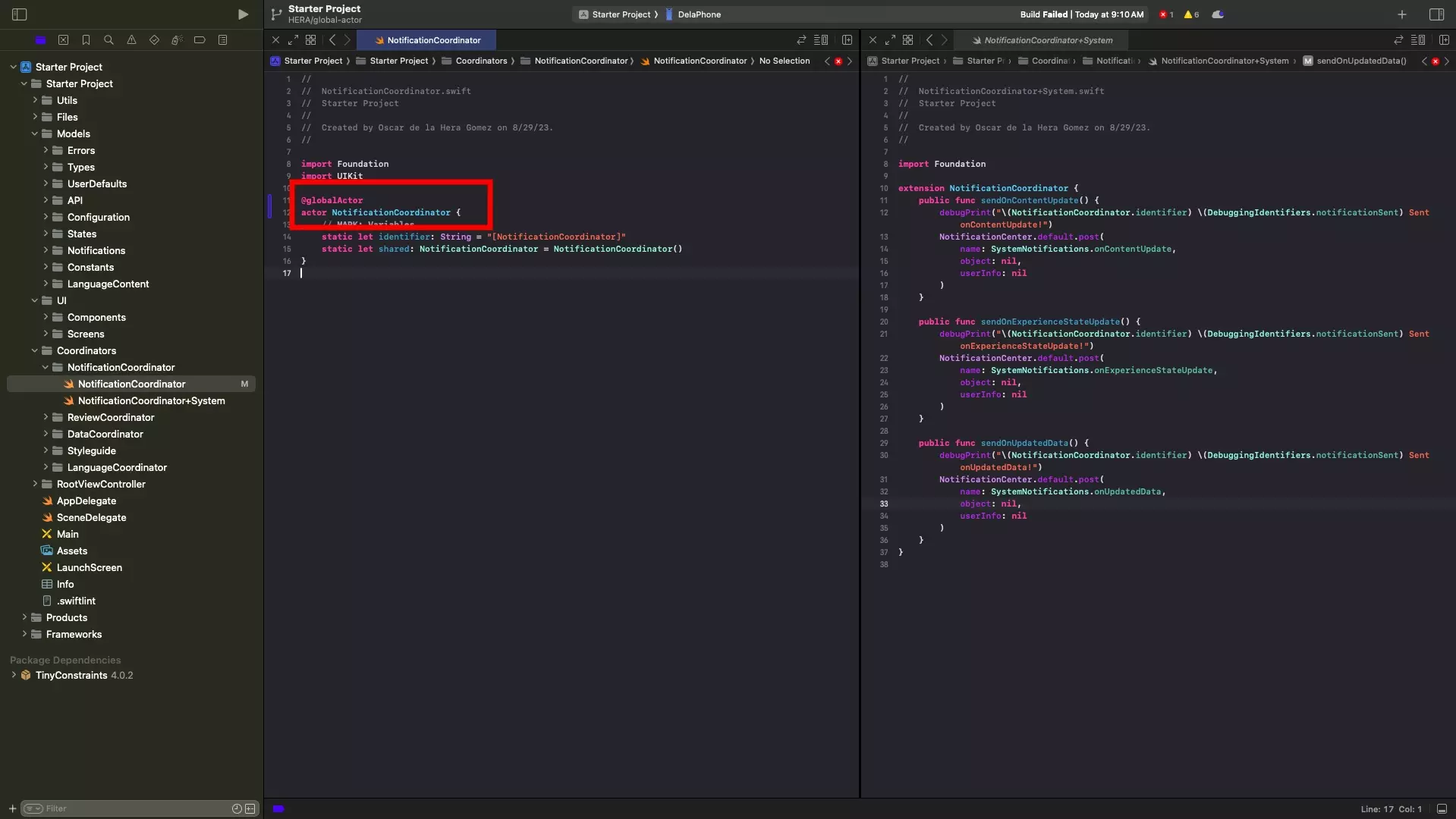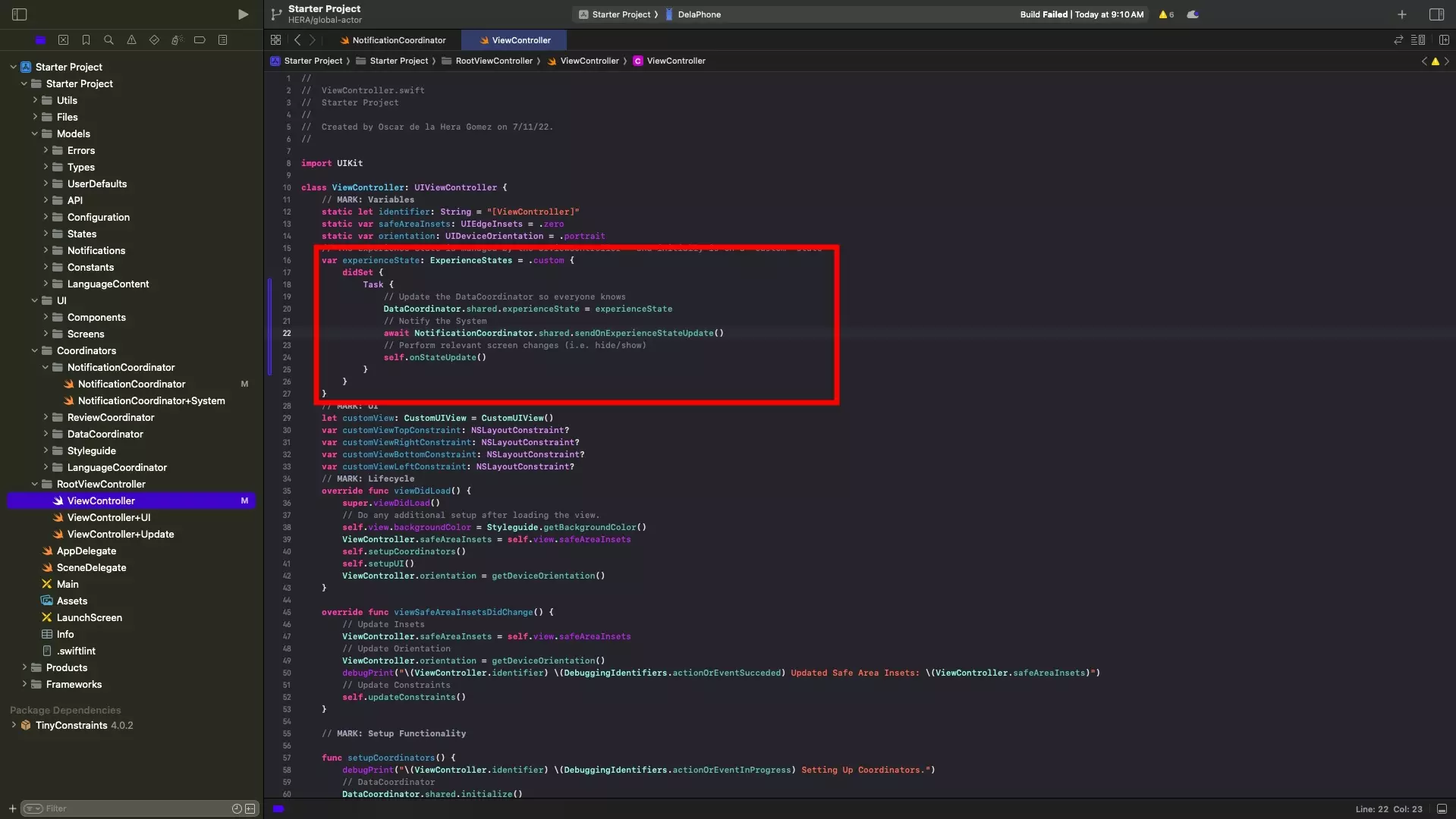How to create and use a global actor in Swift
A step by step tutorial on creating a global actor in Swift. Github repository included.

A step by step tutorial on creating a global actor in Swift. Github repository included.
SubscribeDownload Open Source Starter ProjectThe following tutorial walks you through how to create a global actor through the lens of our NotificationCoordinator - a singleton intended to act as the center for sending type-checked notifications.
This singleton is available as part of our Open Source Swift Starter Project that is available in the link below.
Step One: Create the Global Actor

Create a singleton class and :
- Replace the class attribute with actor.
- Assign the @globalActor annotation to make it conform to the protocol.
- Make sure that it has a shared property that acts as the singleton.
Subsequently, create any additional functionality that may be required. We recommend you do this in extensions that separate code into specific functionality.
Step Two: Wrap Functionality in a Task

As a Global Actor must conform to concurrency, every action that you take with it must be wrapped in a task and must use async/await.
Looking to learn more about things you can do with Swift and XCode ?
Search our blog to find educational content on learning how to use Swift and XCode.